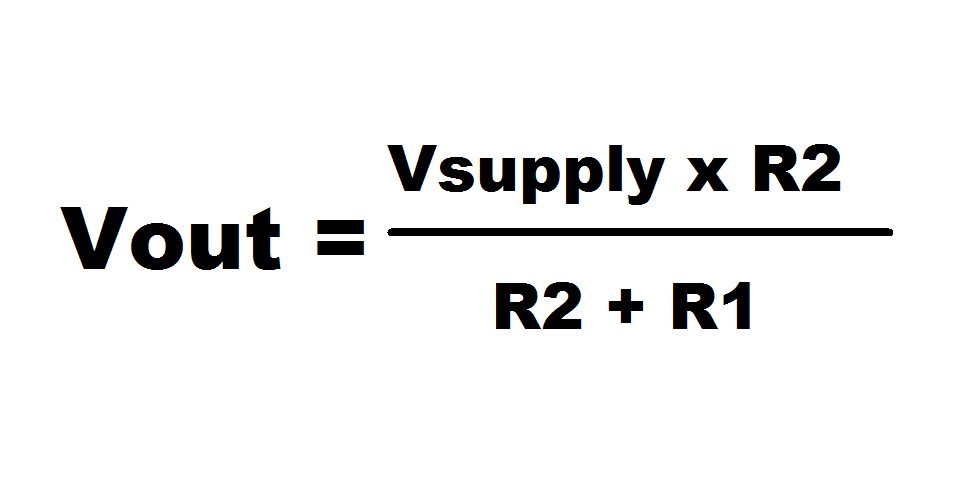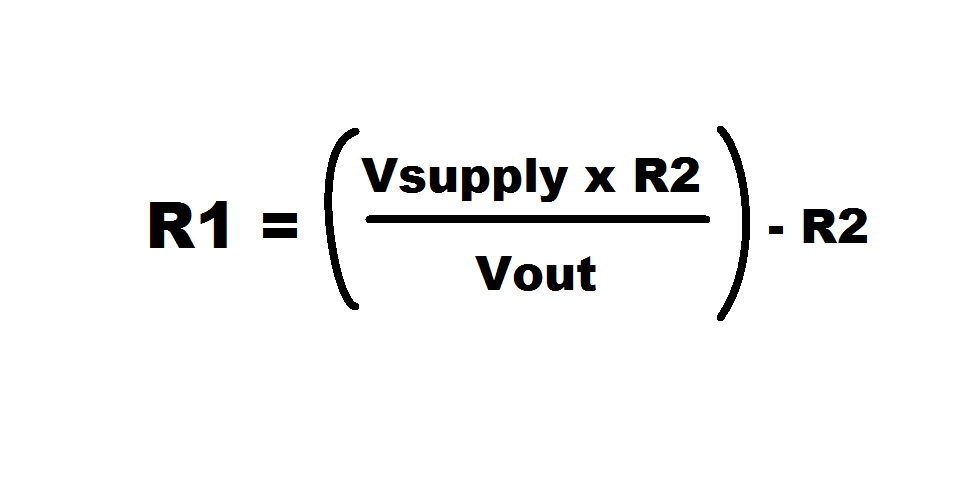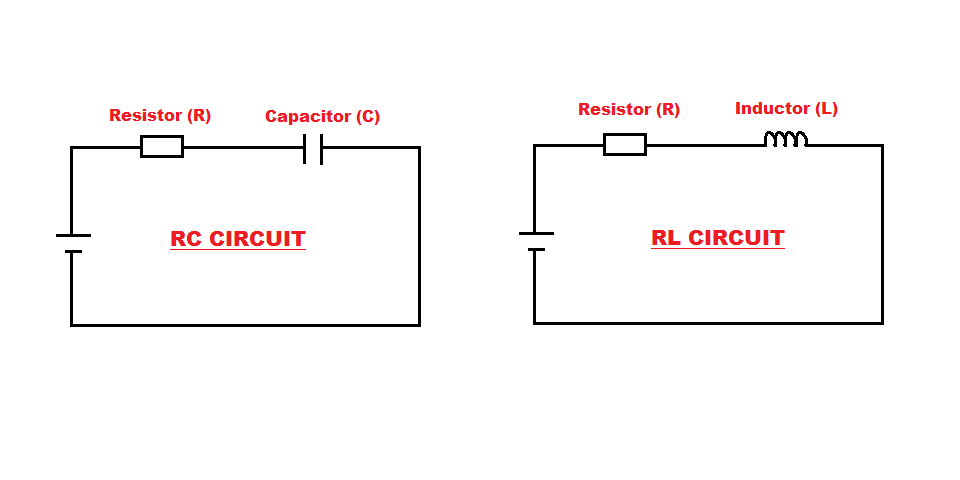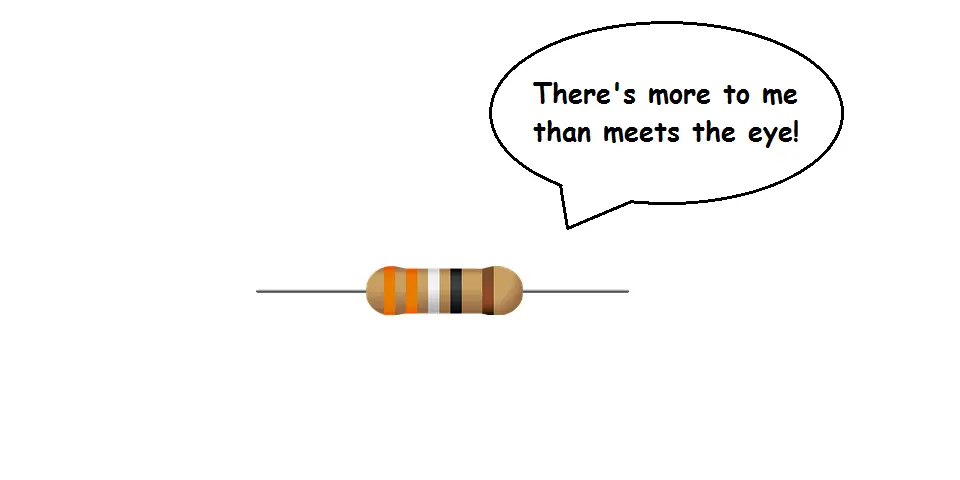Resistors are an essential electronic component that can be found in many (if not all) circuits. They play a crucial role in being able to limit the flow of current in a circuit. But, is the resistor only confined to this one ability? No, the resistor has many other functions other than just limiting current which include;
- Reducing voltage
- Temperature control
- Acting as a fuse
- Timing, Waveshaping, Filtering
- Pull-up and Pull-Down resistors
- Biassing active elements
- Terminating transmission lines
- Heating
This article shall take an in-depth look at each of these different functions of a resistor in a circuit.
What is a resistor?
The electrical and electronic world is filled with many different components, and devices, each have a set of unique abilities. One of those components is the Resistor. The resistor is one of the most common components which you will find in almost every circuit. It is a passive electronic component whose main purpose is to provide resistance and limit the flow of current. The resistance of a resistor is measured in Ohms (Ω). The amount of current that is allowed to flow is determined by a resistor’s resistance level. A higher resistance means less current can flow, and a lower resistance results in more current flow.
The resistance of the resistor is determined by Ohm’s law which states that the current through the resistor is proportional to the voltage across its terminals.

Common resistor functions in a circuit
Resistors are widely known for being able to limit the flow of current. But, there is more to this unassuming component than meets the eye. A resistor has many other functions in electrical and electronic circuits.
Resistor function #1 in a circuit: Limit flow of current
The first function of the resistor is its main purpose; limiting the flow of current. So, why is limiting the flow of current in a circuit important? All components have Power ratings which tell us the maximum levels of current and voltage they can handle. Exceeding these levels for extended periods of time will damage the component. So, the power to components needs to be limited to avoid damaging them. But, a power supply is fixed in its value. To combat this issue you can place a resistor which will be able to limit the current to components and protect them from damage.
Limiting the flow of current also has other applications. As we just saw that by controlling the current to a component (using a resistor) we also gain the ability to control the power it receives. This power control can be used to control the speed of a motor, adjust the brightness of a light, alter musical tone pitch, control the amplitude of an amplifier, as a few examples.
Resistor function #2 in a circuit: Reduce voltage
The next common function that a resistor has in a circuit is Reduce voltage. A resistor is going to have a voltage drop across it. The magnitude of the voltage drop is determined by ohm’s law which is equal to the current through the resistor, multiplied by the resistance of the resistor. The greater the resistance the greater the voltage drop.
Now when two resistors are placed in series and connected to a supply voltage (as seen below), the configuration is known as a Voltage Divider.

This configuration gives us the ability to reduce the supply voltage to a desired value. This value is determined by the resistances of the two resistors and is calculated using the formula below.

To achieve a desired output voltage, we first set the resistance for R2. Then we rearrange the formula to calculate the resistance of R1 which will give us our desired output voltage.

For example, say we required a 4V at our output (the supply voltage is 5V). We first select the resistance of R2 (1K). We then rearrange the equation to make R1 the subject (as we just saw above), and plug in the values. This gives us a value of 250. So to get a 4V output, you will require a resistor with a resistor of 250Ω for R1. However, a note has to be made. The value of 250Ω might not be available, so you will just have to select the next best value according to the Standard Resistor Value E Series
This ability of a resistor to reduce voltage in the voltage divider configuration can be utilised as a voltage regulator to step down a voltage. reduce the input voltage to a microcontroller or bias active elements (as we shall see later).
Resistor function #3 in a circuit: Temperature control
When current flows through a wire, electrical energy is converted to heat energy. This phenomenon was discovered by an English physicist named James Prescott. He formulated that the heat generated per second by a conductor carrying current is proportional to the conductor’s electrical resistance and the current through the conductor squared. This formula and phenomenon is known as Joule’s Law.
Q = I2 x R x T (Joule’s Law)
Q = Heat
I = Current
R = Resistance
T = Time
As you can see from the formula, heat has a directly proportional relationship with resistance. This means that by varying the resistance of a resistor we can control temperature.
Resistor function #4 in a circuit: Fuse
As we saw earlier, all components and devices have maximum power ratings which should not be exceeded. By properly designing our circuits we can ensure that these current and voltage levels are within safe operating conditions. However, even with proper designing, circuits can still be subjected to high currents which are known as Overcurrents. Overcurrent is a situation where the current rises to levels above the normal current levels of a circuit.
Possible causes for over currents include;
- Short circuits
- Excessive loads
- Incorrect design
- Arc fault or,
- Ground fault
Fuses are electrical safety devices that protect circuits and components from overcurrent. It consists of a thin wire that melts when excessive current (above the nominal levels) flows through it.
A resistor has the ability to operate as a fuse. This type of resistor is known as a fusible resistor. It melts just like a fuse when excessive current flows through it, protecting the circuit and components from damage. But, the benefit of a fusible resistor is that it acts as a normal resistor under normal operating conditions.
Resistor function #5 in a circuit: Filtering, Wave-shaping, Timing
Resistors can do awesome things by themselves, but when they combine their abilities with other components they can achieve even more. The two components that are best friends with the resistor are the Capacitor and Inductor. The resistor can be combined with these components to form RC (resistor and capacitor) and RL (resistor and inductor) circuits.

Each type of circuit has its own set of unique applications which include Filtering, Waveshaping and Timing.
Resistor function #6 in a circuit: Pull-up and Pull-down resistors
Microcontrollers are very important devices in Embedded Systems. They act as the brains of these systems in charge of controlling operations, flow of information and input and outputs. Microcontrollers are digital devices with pins that can be in either two states or logic levels; ON (HIGH) or OFF (LOW) which is represented by binary; 1 and 0 respectively. These pins can be configured either as inputs or outputs. Buttons and switches can be connected to these pins when configured as an input. However, if we just connect a button to a microcontroller, the input would be left floating (which essentially means the pin could float between the two logic states) which is an unwanted scenario.
Resistors are used to help tie or secure an input pin to a logic level so it is not left floating. A resistor can be connected to ground (0 or LOW). This type of configuration is known as a Pull-Down Resistor and helps secure a LOW logic state. Or, it can be connected to the supply voltage (1 or HIGH). In this configuration it is known as a Pull-Up Resistor and helps secure a HIGH logic state.

Resistor function #7 in a circuit: Bias active elements
Active elements are devices with the capability of generating electrical energy. They take an input signal, and produce a larger signal at its output. Transistors are common active elements and an important component in the world of electronics. They have two specific roles; amplify electric current or block it.
Transistor biassing is a crucial part when working with transistors which involves setting a transistor’s operating voltage or current conditions to the right levels so as to ensure input signals are amplified correctly. Resistors are used to help bias transistors. It can be done in two ways either by using a single feedback resistor or a voltage divider configuration.
Resistor function #8 in a circuit: Terminate transmission lines
We live in the age of information. We are constantly sending and receiving information on a daily basis. One way we send information is via transmission lines. Resistors are used in transmission lines to dissipate energy in the form of heat. But, why? They are used to absorb energy to prevent reflections within the cable. In an ideal transmission line (one without a resistor), when a piece of data reaches its destination it will still have energy and reflect back and forth interfering with other data. As we know now, resistors dissipate energy in the form of heat which comes in useful in this exact application. The resistor can absorb this energy so that the data does not reflect back and forth.
Resistor function #9 in a circuit: Heating
Last but not least for resistor functions is Heating. It has been mentioned numerous times already, but it won’t hurt mentioning it again one last time; when electrical current passes through a resistor, energy is lost in the form of heat. This heat comes from electrical energy being converted to thermal energy. Most of the time this is unwanted. The less hot a resistor gets the better. But, there are applications where this heat can be put to good use. Fan heaters, toasters, are some of the most common devices that make use of resistors for heating purposes. Other applications that make use of this include Aeronautics, Automotive, Military and Smart clothing industries.





